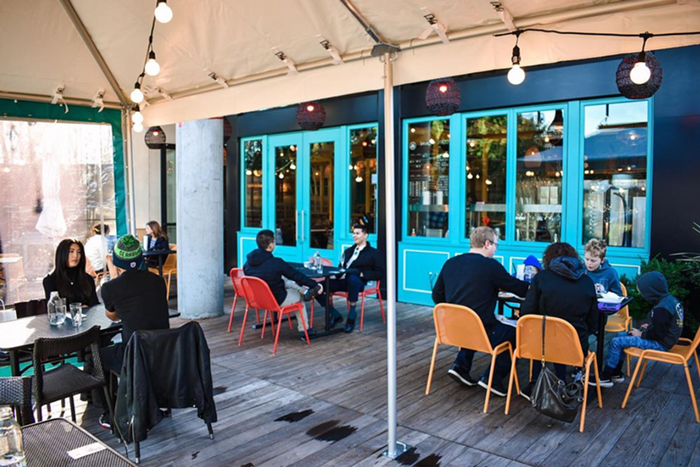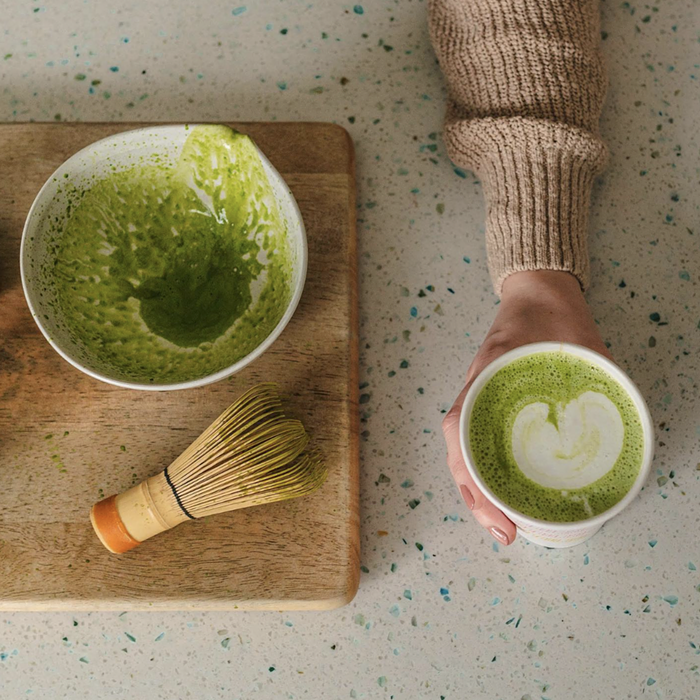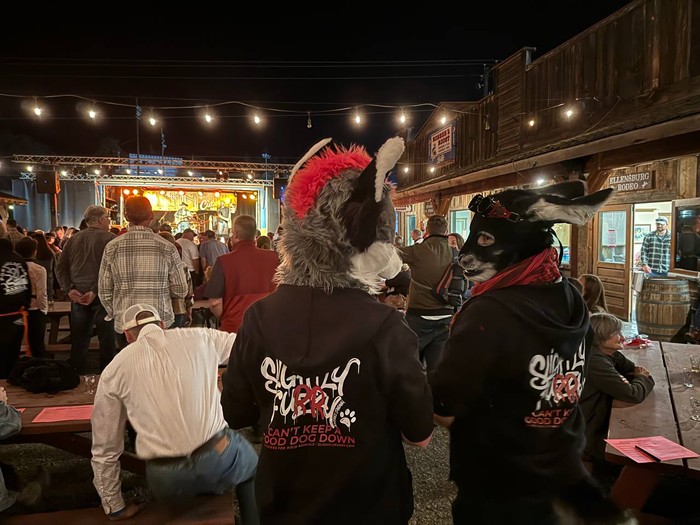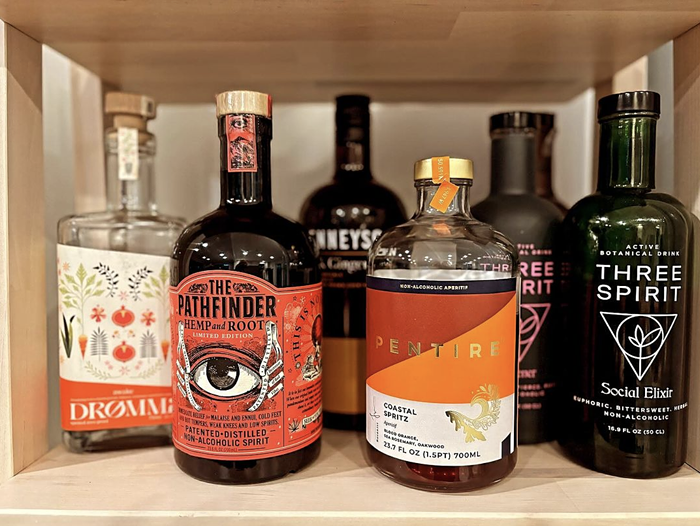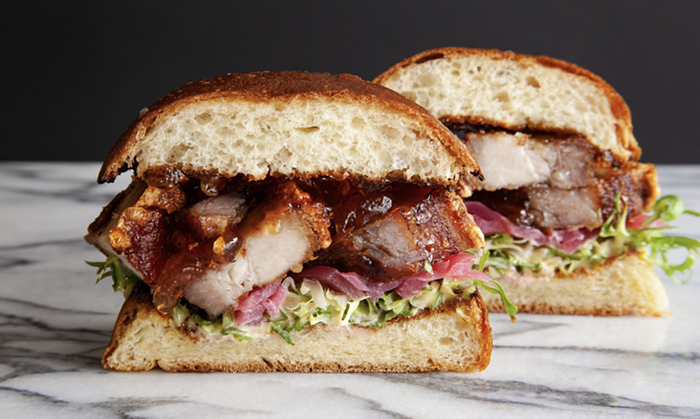I have to begin this appreciation of cured meat with an ugly image. It has haunted me since I first saw it in a Denver restaurant in the fall of 2008. Time has erased the name of the restaurant from my memory, but it was a newish place with a few pretentious design features. It was also in a section of town that recalled the old buildings of Ballard Avenue Northwest. I was sitting in the restaurant's bar with a friend, who was to my right. And to my left sat an unknown middle-aged man wearing a cowboy hat. This cowboy had in front of him a huge plate that had on it a humongous steak. The cowboy seemed to be taking a break from conquering this vast country of meat, which had next to it a very small village of vegetables. (My imagination always adds a sheen of perspiration on this hard-eating cowboy's brow.)
The purpose of this image is to show the wrong way to eat meat. That cowboy was really no better than a python whose middle section is bloated by some mammal it swallowed and is slowly digesting. Meat is not something you are supposed to eat in large amounts. The purpose of eating it should not be to feel full but to taste its flavor. This is indeed the essence of cured meats.
"Dry-curing literally concentrates the flavor of meat," explained Brendan McGill, the owner of Hitchcock Restaurant on Bainbridge Island and Hitchcock Deli in Georgetown (the former opened in 2010, and the latter a year ago—both serve meats that have been cured in-house). "When you dry-cure, the meat tends to lose 30 to 40 percent of the mass in the process. So, without that water, you are concentrating the flavor of the muscle. And then it undergoes an enzymatic reaction as well that produces secondary flavors. It's like meatier meat."
McGill is not a big meat eater. His staples are fish, vegetables, grains, and legumes. A steak is an event for his family. For reasons related not only to aesthetics but to the environment (read Denis Hayes and Gail Boyer Hayes's Cowed: The Hidden Impact of 93 Million Cows on America's Health, Economy, Politics, Culture, and Environment), it is best to eat meat as slices, bits, and bites. A post-carbon future will have to reduce meat to its taste. Gone will be the days of eating pork and beef like rice and bread—as a staple, as something that satisfies hunger. The new virtue is not making meat a meal but a part of its coloring. And the more color that meat expresses, the less of it needs to be added to a dish. This ideal is, you will agree, as beautiful as it is green.
"The reason it is so important to work with high-quality meat—and I do not cure commodity meat—is because dry-curing always amplifies the flavor taste," explained McGill. "So you want to start with the fact that it is already great. Commodity meats are not great. What you have to remember is that the enzymatic reactions that make the muscle rot are controlled during curing, so that we enjoy the blend of flavors of that [decaying] process and none of the bad stuff."
Along with the flavor of the meat, there is also the smoke of the fruitwood used during curing. McGill uses the wood of apple trees, which he obtains from Ray Morris, a Georgetown businessman who operates orchards in Eastern Washington. When an apple tree is around 50 years old, it becomes too much of a mess for humans to effectively harvest its fruit, and so it's chopped down. Its wood is then cured in a warehouse for a year, brought to Seattle, and then sold to people like McGill.
When I visited Hitchcock Deli, I was shown these chunks of apple wood in a massive oven that had been repurposed for smoking. For some reason, I found the bits of wood, light brown in color, to be as magical as branches and twigs carried by children in a fairy tale. But the point of all this was to get the most out of the meat. And Hitchcock Deli admirably achieves this: All of their meats (and I tried them all) are exquisite, particularly the slices of pork from Tamworth heritage-breed hogs. Like a comet of ice flying into the sun, the fat simply and quickly dissolves upon contact with my tongue.
But there is another reason to love cured meats, and it's found in the Capitol Hill charcuterie and cheese joint called Cure. Here, one can eat without being oppressed by the heat of cooking, the thermal intensity of a busy kitchen. Cure, which is a smooth composition of exposed concrete and windows that have relaxed views of Cal Anderson Park, is cool in mode and temperature. You can order plates with rich cheeses and slices of smoked duck, or a variety of French/Italian/American cured pigs with sides of picholine olives or pear mostarda. And there are no flames in this business, no noisy frying, no burning, no sweat. There is just the confident slide of the slicer. It is such a peaceful way to eat.
One more thing. There is the ancientness of cured meats. When one walks down to a place like DeLaurenti Specialty Food & Wine in Pike Place Market, one steps out of the babble of First Avenue and Pike Street and enters the store's familiar order, you feel as if you have connected with a much older world. This feeling is enhanced by the fact that the smoked meats in its deli have a much older history in markets than refrigeration (refrigerated meats are constantly threatened with spoiling). All of these cured meats hanging from hooks or resting in baskets or bowls—the deep-red of the Spanish jamón ibérico, the fat dripping from salumi sausages—have the air of a grand tradition and having withstood the test of time.
They also originate from a society that ate much less meat than we do. ![]()


